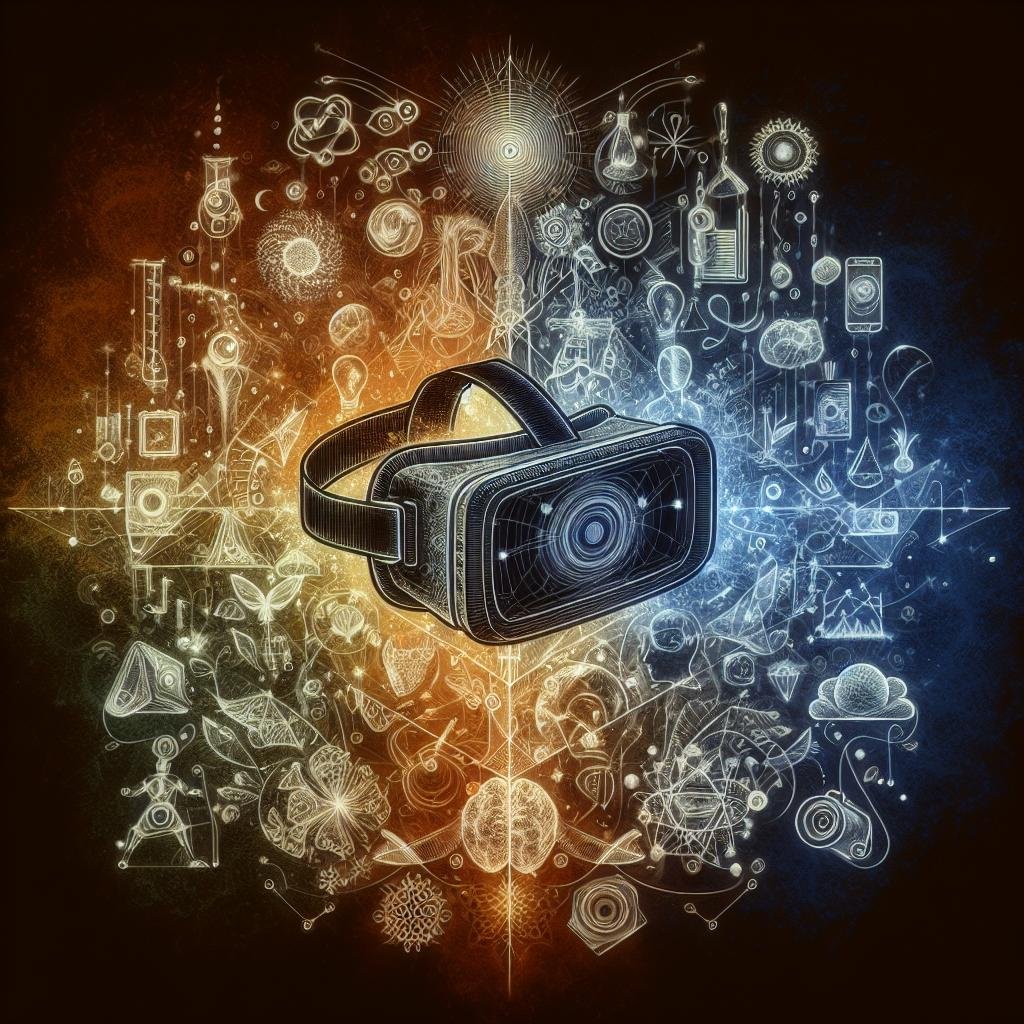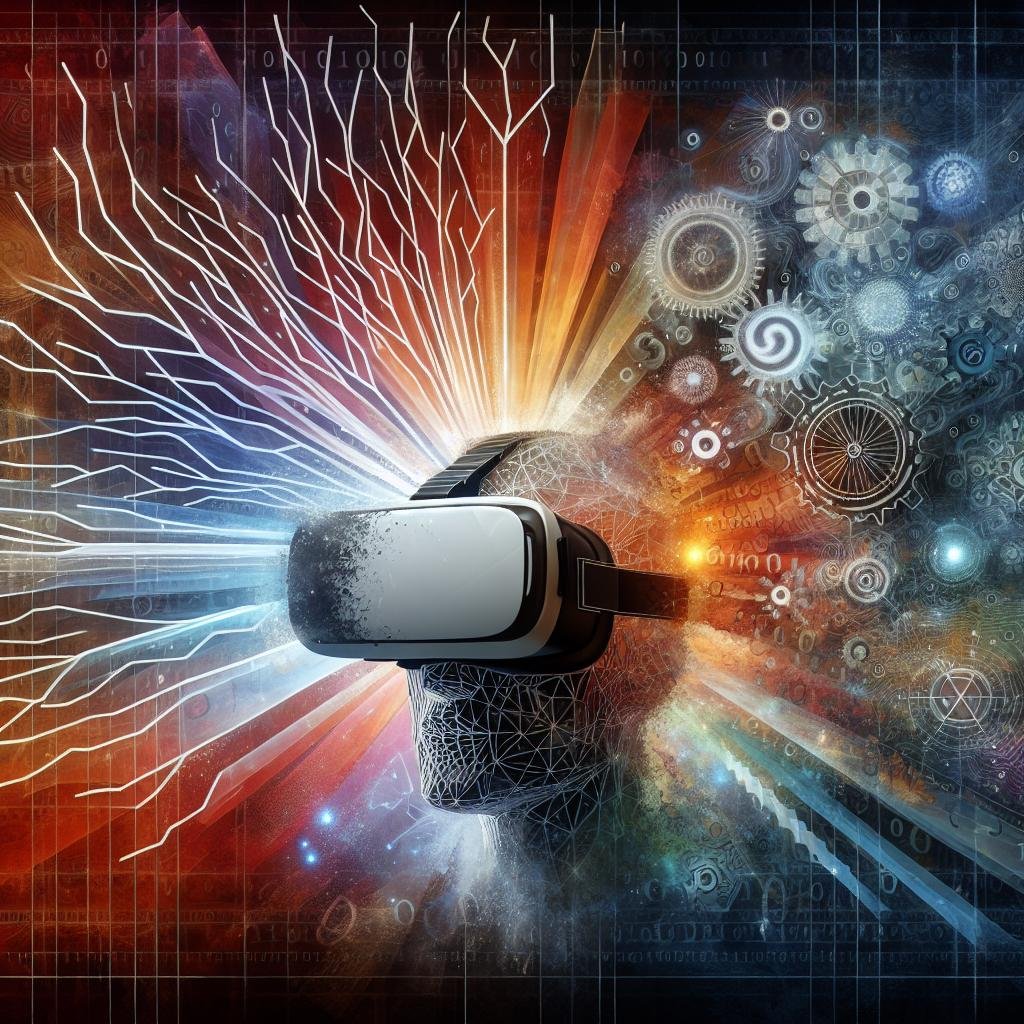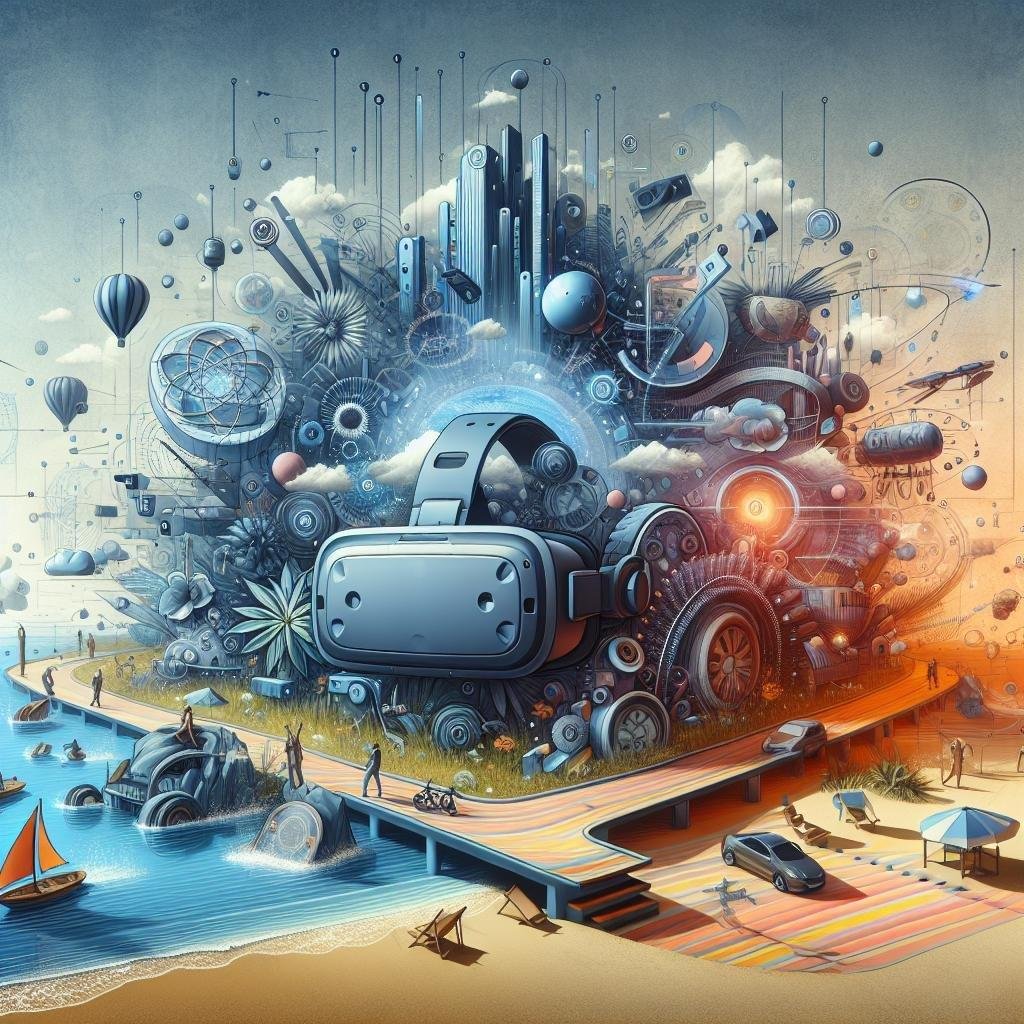Who Invented VR Headsets: A Dive into the Origins of Virtual Reality
In the ever-evolving world of technology, virtual reality (VR) headsets have become a symbol of futuristic innovation, transporting users into immersive digital realms. But have you ever paused to wonder about the minds behind this incredible invention? Join us on a fascinating journey as we explore who invented VR headsets, uncovering the pioneering individuals and groundbreaking ideas that laid the foundation for the virtual escapades we enjoy today. As we delve into the past, you’ll discover not just a story of technological triumph, but also a testament to human inventiveness and the relentless pursuit of making the impossible possible. So, strap in as we embark on this virtual voyage to meet the trailblazers who turned dreams into digital reality.
Unveiling the Origins: The Pioneers Who invented VR Headsets
Breaking Ground: Visionaries Behind VR Headsets
In the realm of technological innovation, few inventions capture the imagination quite like virtual reality headsets. The journey to create these immersive devices is a tale of ingenuity and vision. one of the key figures in this narrative is Ivan Sutherland, who, alongside his student Bob Sproull, introduced the groundbreaking concept of the “Ultimate display” in the 1960s. their creation, known as the Sword of Damocles, was the first recognizable head-mounted display, a meaningful precursor to today’s VR headsets. Although the technology of the time was limited, and the device was rudimentary by today’s standards, Sutherland’s work laid the foundation for future advancements in VR technology.
Over the decades, a community of passionate pioneers has relentlessly pursued the dream of bringing virtual worlds to life. Innovators like Jaron Lanier, who coined the term “virtual reality” in the 1980s, championed the development of VR technology. Companies like Sega and Nintendo toyed with VR concepts, but it wasn’t until Palmer Luckey introduced the Oculus Rift in 2012 that VR headsets became accessible to consumers. This new wave of headsets combined affordability with immersive experiences, sparking renewed interest and innovation in the field, helping to cement the invention of VR headsets as a milestone in our digital age. As we explore the evolution of these devices,it’s crucial to acknowledge the visionaries who dared to dream of realities beyond our own.
| Pioneer | contribution |
|---|---|
| Ivan Sutherland | The “Sword of Damocles” |
| Jaron lanier | Popularized “Virtual Reality |
| Palmer Luckey | Oculus Rift |
- Ivan Sutherland created the very first prototype of a VR headset in the 1960s.
- jaron Lanier was pivotal in transforming VR into a cultural phenomenon.
- Palmer Luckey revolutionized the market with consumer-friendly VR headsets.

Journey through Time: The Evolution of VR Headsets and Their Inventors
Who Were the Visionaries Behind VR Headsets?
Imagine a world where stepping into a different reality doesn’t just belong to science fiction. The journey through time in search of who invented VR headsets catalyzed this once unthinkable notion into everyday life. The foundational stones of virtual reality as we know it today began in the 1960s with Morton Heilig, a filmmaker who dared to dream of immersive experiences. Heilig’s vision materialized with the creation of the Sensorama, an arcade-style theater offering a multi-sensory simulation, laying an early blueprint for VR technology. Fast forward to the 1990s, and you’ll find Jaron Lanier, the charismatic father figure of VR. Lanier helped popularize the term “virtual reality” and, through his company, VPL Research, developed the DataGlove and EyePhone, early ancestors of modern VR headsets. Their spirit of innovation ignited a revolution.
The quest for who invented VR headsets attracted various minds, each contributing salient features that made VR headsets what they are today. The turn of the millennium, however, witnessed a resurgent wave of ingenuity pivotal in shaping the VR landscape. Notably, Oculus Rift—a game-changer introduced by Palmer Luckey—emerged, enabling a practical submission in gaming and creative industries.Alongside Luckey’s success story was a coalition of inventors and tech enthusiasts capturing imaginations. As we traverse this evolutionary tale, it’s clear these inventors weren’t just pioneering technology; they were crafting alternate universes. Here’s a snapshot of some notable contributions:
- 1960s: morton Heilig’s Sensorama
- 1980s-1990s: jaron Lanier’s VPL Research
- 2010s: Palmer Luckey’s Oculus Rift
| Inventor | Contribution |
|---|---|
| Morton Heilig | Sensorama |
| Jaron Lanier | DataGlove, EyePhone |
| Palmer Luckey | Oculus Rift |
These trailblazers didn’t just develop gadgets; they infused them with the power to inspire limitless possibilities. Their collective inventions, defining different decades, allow us to explore realms that are only a headset away.
Behind the Lens: How VR Headsets Were Innovatively Crafted
Crafting the Future: Pioneers of VR Headset Design
in the world of virtual reality, the quest to perfect the VR headset has been a thrilling journey of innovation and imagination, driven by a few visionary creators. These trailblazers redefined technological boundaries, combining cutting-edge optics, immersive sound, and ergonomic design. From bulky contraptions to sleek wearable devices, every iteration of the VR headset brought us one step closer to a digital dreamscape where the lines between reality and fantasy blur. It’s a story of relentless pursuit, where passionate engineers and designers sculpted worlds within worlds, each pixel a brushstroke on the canvas of the mind.
- Display technology: Evolving from simple screens to OLED and beyond.
- Motion Tracking: Full room-scale VR thanks to innovative sensors.
- Audio Design: surround sound and spatial audio crafting an immersive experience.
- User Comfort: Lightweight materials with adjustable fits.
The Creative Process: Building VR Headsets That transcend Reality
| Component | Innovation |
|---|---|
|
|
|
Captivated by the limitless potential of virtual reality, inventors continually sought to refine these devices. Whether they were enhancing visual clarity through advanced rendering techniques or integrating haptic feedback systems to give users the sensation of touch, the goal was to create a VR headset that felt almost like a second skin.collaborations between artists and tech experts enabled the melding of intuitive interfaces with complex engineering, all aimed at creating something magical and transformative. This compassionate alchemy of sight, sound, and touch continues to evolve, promising even more incredible adventures for future explorers of the virtual domain.

Pathways to the Future: Recommendations for Aspiring VR Innovators
Pathways for Creative Exploration and Innovation
For those inspired by the legacy of pioneers who embarked on the journey to invent VR headsets, charting your path in the realm of virtual reality offers thrilling potential. Embrace the creative freedom inherent in an evolving landscape by engaging with imaginative design and experiential storytelling. This involves mastering not only the technical tools but also the capacity to envision worlds that captivate and inspire. Laying a foundation on principles of user-centered design can ensure that every encounter is intuitive and enriching, fostering deeper connections with users.
- Experiment with emerging technologies and platforms.
- Immerse in diverse VR experiences to spark creativity.
- Seek mentorship from established VR creators.
Building Collaborative Communities in VR Development
Understanding the collaborative nature of virtual reality development is crucial for aspiring innovators who dream of making a mark akin to those who invented VR headsets. Joining forces with artists, developers, and thinkers from disparate backgrounds can yield projects that push boundaries.Engage with VR communities, both local and online, to exchange insights and solutions. These interactions can also offer unique perspectives that challenge conventional approaches and lead to breakthroughs.
| Resource | Purpose |
|---|---|
| Online VR forums | Networking & Knowledge Sharing |
| Workshops & Hackathons | Hands-on Experience & Collaboration |
| Mentorship Programs | Guidance & Growth |
Q&A
Q: Who is credited with inventing the first VR headset?
A: Ah, the tale of VR headsets begins with a curious visionary named Morton Heilig. Back in the early 1960s, Heilig dreamt of an immersive experience that would transport viewers into a different world. His creation, the Sensorama, was an early attempt that combined visuals, sound, and even smell. Although it wasn’t a headset in the way we think of them today, it laid the groundwork for future innovations.
Q: So, when did the first “true” VR headset make its debut?
A: Fast forward a few years to 1968, and you’ll meet ivan Sutherland, a computer scientist with a knack for pioneering technology. Sutherland and his student Bob Sproull developed what is frequently enough hailed as the first true VR headset, known as the “Sword of Damocles.” While it didn’t quite have the sleek design we’re familiar with now, it was a trailblazing step in the VR evolution, resembling a futuristic contraption hanging from the ceiling, hence the name!
Q: Were these early VR headsets used by the general public?
A: Not exactly! These initial creations were more in the realm of scientific experimentation and academic endeavors. The technology was cumbersome and costly, limiting its access to research labs and universities. It wasn’t until later that VR evolved into something more accessible for the general public to enjoy.
Q: How did the VR headset evolve into what we use today?
A: The journey from the Sword of Damocles to the sleek, wireless VR headsets of today is a story of ongoing innovation and unyielding passion. Over the decades, advancements in computing power, graphics technology, and user interface design have transformed VR from a futuristic vision into an immersive reality. Companies like Oculus (now part of Meta), HTC, and Sony have played significant roles in bringing VR into everyday homes.Q: What’s the future of VR headsets looking like?
A: Buckle up, as the future of VR headsets is nothing short of thrilling! We’re talking about improving resolution, increasing comfort, and eliminating wires altogether. the magic of VR is expected to extend beyond gaming and entertainment, enriching fields such as education, healthcare, and social interaction. Who knows,maybe one day we’ll be telling tales of Heilig and Sutherland to our virtual grandchildren,reminiscing about the quaint early days of VR.
In the immersive world of virtual reality, the possibilities truly seem limitless!
Closing Remarks
as we journey through the realms of virtual reality, we owe a nod of gratitude to the pioneers who first envisioned this digital frontier. From Morton Heilig’s Sensorama, which laid the initial tracks, to the tireless efforts of innovators like Ivan Sutherland and Palmer Luckey, the evolution of VR headsets is a testament to human curiosity and ingenuity. These inventions have transformed fictional worlds into immersive experiences, forever altering our interaction with technology.
As you put down this article,remember that the world of VR is constantly evolving,with new horizons yet to be discovered. Whether you’re stepping into a fantastical game, exploring distant lands, or collaborating in virtual spaces, the magic of VR continues to captivate and inspire. So, strap on your headset, dive into the unknown, and perhaps, you’ll find a bit of yourself in the creation of new digital adventures. Until next time,keep dreaming,exploring,and pushing the boundaries of what reality can be.

